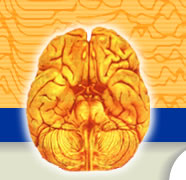A Self-Recovery Approach for
Effective, Holistic Treatment of Methamphetamine Addiction
Goal
The goal of this research proposal is to facilitate the substance abuse rehabilitation efforts in Iowa, especially those targeted for the methamphetamine addicts. Research will evaluate and document the evidence-based program of Self-Recovery, which utilizes the complementary medical modality of meditation to bring about a holistic, integrated, comprehensive restructuring of the brain physiology of Meth addicts. This approach also helps facilitate long-term, successful rehabilitation and the development of a healthy, fulfilling life as a member of society.
During the past four decades, this research-based program has been successfully applied in many interventions in the area of substance abuse and corrections. The Self-Recovery Program is built on the ability of the Transcendental Meditation technique to provide the recovering Meth addict with sustainable, self-sufficient integration of the brain and thus of thinking, feeling and behavior. The Self-Recovery Program offers every Meth addict a powerful, yet simple tool that promotes sense of self, well-being and mind/body integration.
Self-Recovery Program
Numerous research studies have demonstrated the dramatic effectiveness of complementary and alternative medicine modalities, such as the Transcendental Meditation program, in preventing and treating addiction. Successful use and outcomes of the TM practice does not require any changes in lifestyle, beliefs, motivation or emotional-cognitive state. A selected list is available of relevant research published on the TM program in drug and correctional rehabilitation. Original and cited research articles can be found in part in two collected volumes of published research.1
Key Elements of Effective Rehabilitation
A review of the brain research literature on addiction suggests that any effective strategy will require four main elements to reverse the maladaptive changes in the brain of addicts. Research indicates that the Self-Recovery Program should significantly impact the four elements and thus to provide an effective, complementary system of rehabilitation (see summary below). Most research on TM yields significant outcomes within 1-3 months, and multiple posttests show a cumulative influence. Compliance with TM is very high in both normal and at-risk populations. As of 1995, meta-analyses indicate TM’s effect on reducing substance abuse and in creating a renewed sense-of-self and self-esteem is significantly larger than those produced by relaxation and other prevention and treatment programs.
Summary of Expected Impact of
Meditation on Drug Rehabilitation
Research on caffeine, alcohol, cigarettes,
marijuana, heroin, cocaine, and amphetamines
Rehabilitation Criteria #1:
Decrease the reward value of the drugs.
- Reported reduction in enjoyment of drugs
- Increased sensitivity to substance effects
- Substance interfered with TM experience
- Decreased negative affect
- Increased positive and stable emotions
- Decreased state and trait anxiety
- Reductions in depression and anger
- Reduced emotional numbness in PTSD Vietnam Veterans
- Reduced alcohol, cigarette and illicit drug use
- Gradual increase in effects sizes over time for alcohol (general population and skid-row alcoholics) and cigarettes indicating increased abstinence and reduced use of chemicals over the long term
- Improved abstinence of illicit drugs in heavy users
Rehabilitation Criteria #2:
Increase the reward value of natural, non-drug reinforcers.
- Meditation gives experience sought with substances
- Meditation leads to increase Nucleus Accumbens DA levels
- Deep rest to reduce brain toxicity reactions
- Better stress coping mechanisms
- Increased positive emotional behavior and stability
- Increased sense of well being and reduced stress
- Enhanced capacity for intimate contact, openness of one’s feelings and spontaneity
- Increased marital and job satisfaction
- Better relationships with co-workers
- Gradual increases
Rehabilitation Criteria #3:
Decrease the conditioned responses based on environmental drug cues.
- No direct studies conducted
- Anecdotal evidence of less affliction of environmental stimuli
- Decreased stress reactivity (skin, endocrine, cardiovascular, EEG)
- Decreased impulsive and rebellious behavior
- Increased inner orientation, reduced influence of environmental influences
- Increased self-reliance
- Increased field-independence
Rehabilitation Criteria #4:
Increase the executive control functioning of the frontal cortex.
- Increase EEG frontal coherence
- Increased intelligence and creativity
- Decrease violent behavior
- Improved outcomes of correctional inmates, 6-15 year reduced recidivism rates
- Decreased risky behavior and more mature decision-making in adolescents
- Reduced impulsivity and aggression in normal populations
- Enhance academic performance
- Increased social and moral reasoning
- Increased ego development in prison inmates and college students
- Increase job performance and business skills
|
